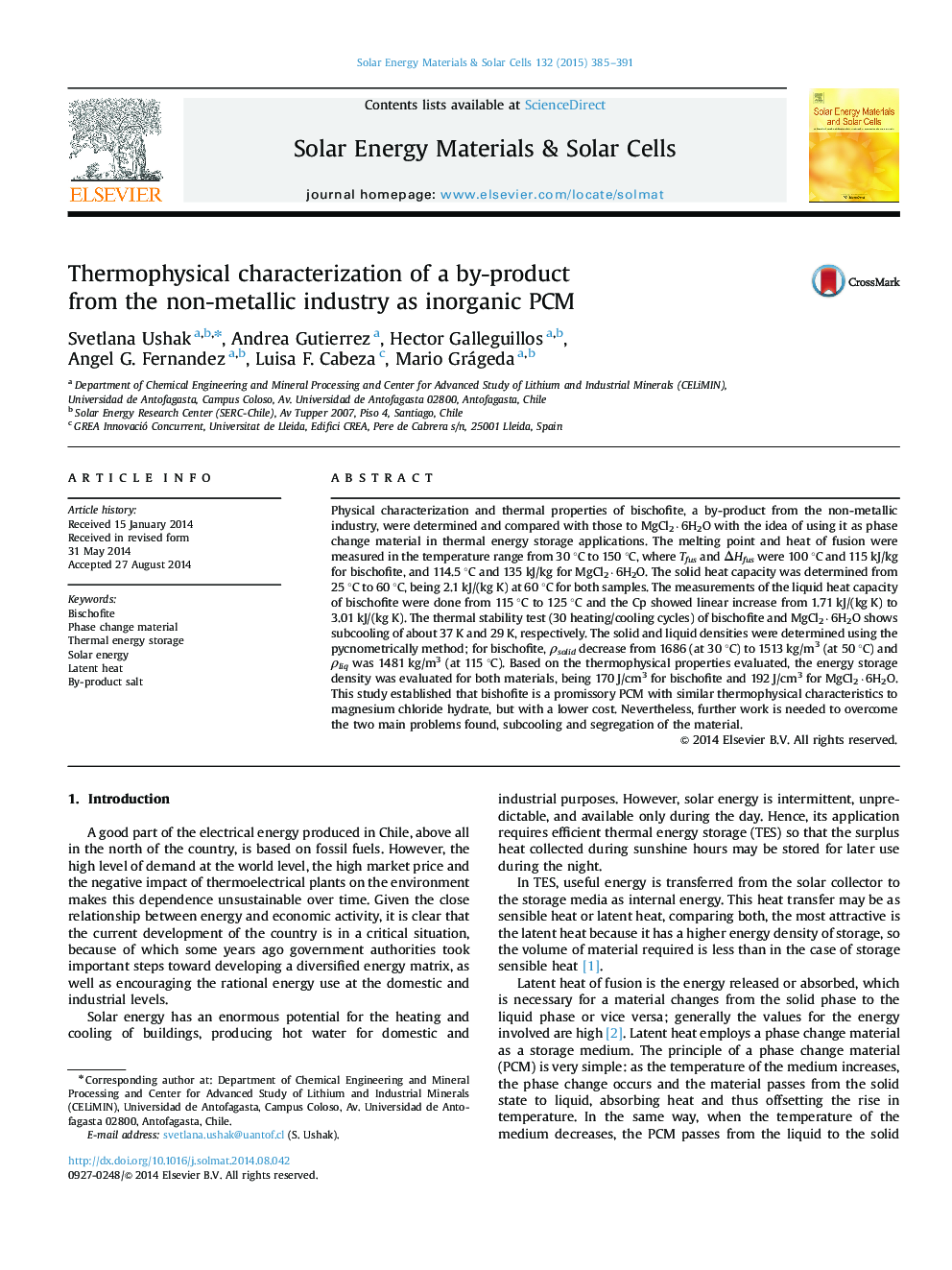| Article ID | Journal | Published Year | Pages | File Type |
|---|---|---|---|---|
| 6535438 | Solar Energy Materials and Solar Cells | 2015 | 7 Pages |
Abstract
Physical characterization and thermal properties of bischofite, a by-product from the non-metallic industry, were determined and compared with those to MgCl2·6H2O with the idea of using it as phase change material in thermal energy storage applications. The melting point and heat of fusion were measured in the temperature range from 30 °C to 150 °C, where Tfus and ÎHfus were 100 °C and 115 kJ/kg for bischofite, and 114.5 °C and 135 kJ/kg for MgCl2·6H2O. The solid heat capacity was determined from 25 °C to 60 °C, being 2.1 kJ/(kg K) at 60 °C for both samples. The measurements of the liquid heat capacity of bischofite were done from 115 °C to 125 °C and the Cp showed linear increase from 1.71 kJ/(kg K) to 3.01 kJ/(kg K). The thermal stability test (30 heating/cooling cycles) of bischofite and MgCl2·6H2O shows subcooling of about 37 K and 29 K, respectively. The solid and liquid densities were determined using the pycnometrically method; for bischofite, Ïsolid decrease from 1686 (at 30 °C) to 1513 kg/m3 (at 50 °C) and Ïliq was 1481 kg/m3 (at 115 °C). Based on the thermophysical properties evaluated, the energy storage density was evaluated for both materials, being 170 J/cm3 for bischofite and 192 J/cm3 for MgCl2·6H2O. This study established that bishofite is a promissory PCM with similar thermophysical characteristics to magnesium chloride hydrate, but with a lower cost. Nevertheless, further work is needed to overcome the two main problems found, subcooling and segregation of the material.
Related Topics
Physical Sciences and Engineering
Chemical Engineering
Catalysis
Authors
Svetlana Ushak, Andrea Gutierrez, Hector Galleguillos, Angel G. Fernandez, Luisa F. Cabeza, Mario Grágeda,
